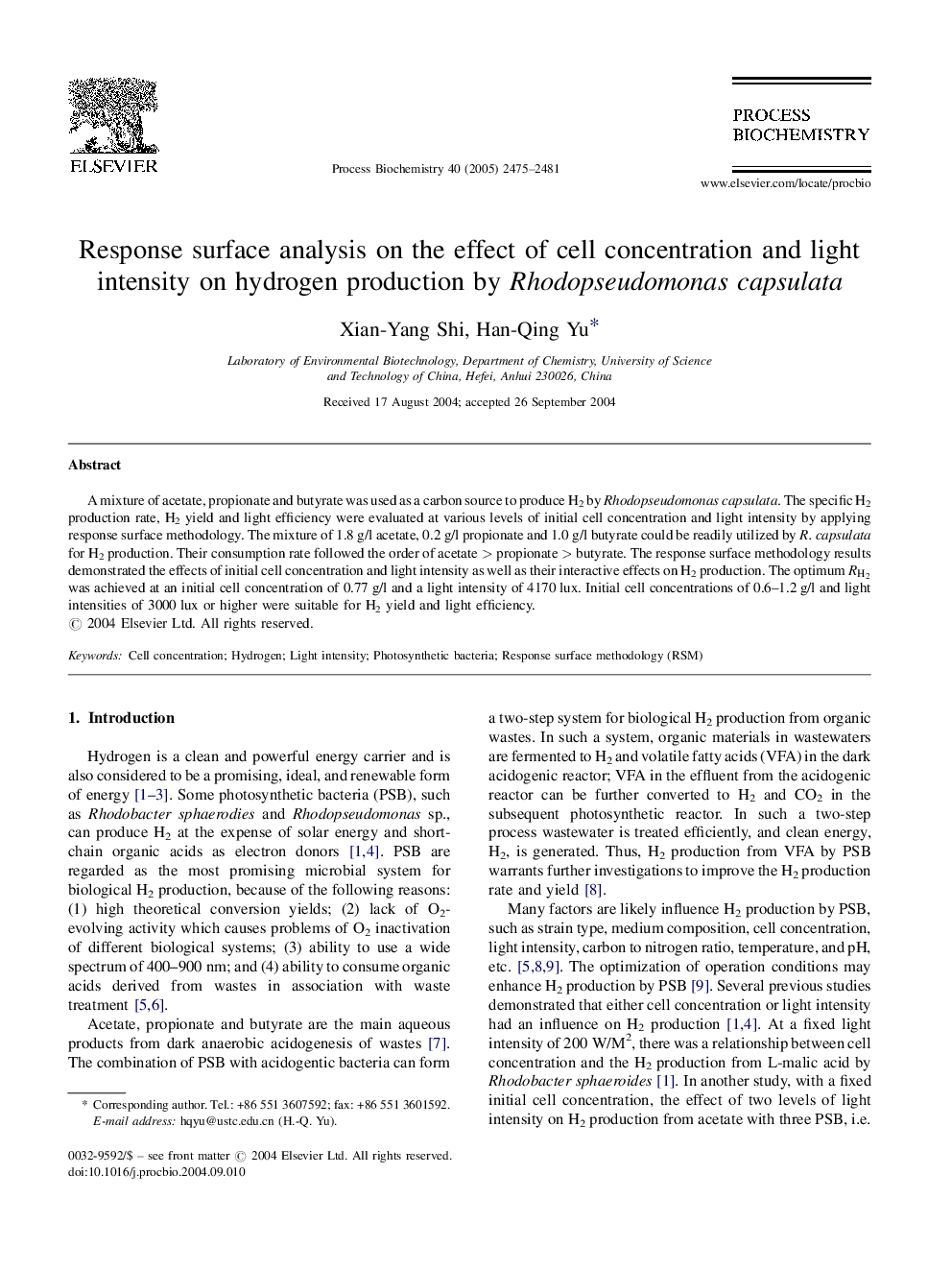| Article ID | Journal | Published Year | Pages | File Type |
|---|---|---|---|---|
| 36552 | Process Biochemistry | 2005 | 7 Pages |
A mixture of acetate, propionate and butyrate was used as a carbon source to produce H2 by Rhodopseudomonas capsulata. The specific H2 production rate, H2 yield and light efficiency were evaluated at various levels of initial cell concentration and light intensity by applying response surface methodology. The mixture of 1.8 g/l acetate, 0.2 g/l propionate and 1.0 g/l butyrate could be readily utilized by R. capsulata for H2 production. Their consumption rate followed the order of acetate > propionate > butyrate. The response surface methodology results demonstrated the effects of initial cell concentration and light intensity as well as their interactive effects on H2 production. The optimum RH2RH2 was achieved at an initial cell concentration of 0.77 g/l and a light intensity of 4170 lux. Initial cell concentrations of 0.6–1.2 g/l and light intensities of 3000 lux or higher were suitable for H2 yield and light efficiency.
